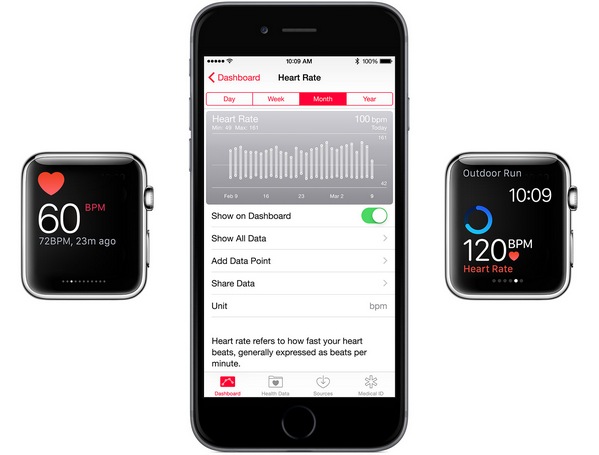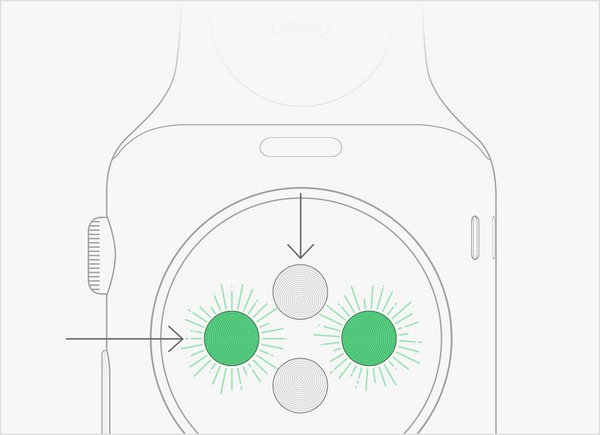Apple recently has revealed on its website how LEDs funtion in the Apple Watch heart rate sensors.
 |
|
Apple Watch paired with iPhone. (All photos courtesy of Apple) |
Basically the smartwatch uses a heart rate sensor that is known as photoplethysmography (PPG), a technology based on the concept of how blood reflects red light while absorbing green light. Green LEDs used in the Apple watch are paired with light-sensitive photodiodes to detect the amount of blood flowing through a person’s wrist at any given moment. Greater green light absorption occurs during heart beats, when more blood flow passes through the wrist. Absorption drops when heart beat declines. The LED lights in the Apple Watch is flashed 100 times per second to measure the user’s heart rate.
The heart rate sensor also uses infrared light. Under this mode, Apple Watch measures heart rate every 10 minutes instead. If the Infrared is not providing adequate reading, the Apple Watch switches to green LEDs. According to Apple, the heart rate sensor compensate for low signal levels by escalating LED brightness and sampling rate.
 |
|
A diagram of green LEDs on Apple Watch. |
Even though studies have shown green LEDs are more accurate for PPG readings, Apple, the company is not using the green LEDs all the time possibly as a battery-saving measure, reported MacWorld.
The Cupertino company also noted there are certain conditions when the watch readings can become inaccurate, such as if the watch is too loose or tightly worn, or during cold weather conditions. It is also much more difficult for the watch to acquire readings for irregular movement or activities, such as tennis or boxing.













